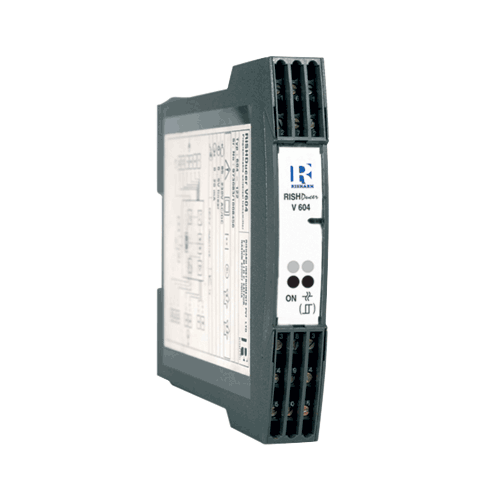Isolators
Deekay Electricals are authorized distributor for Rishabh Isolators. Isolators Provides electric isolation between input, output and power supply. Prevents false measurement due to spurious potentials. Processes live zero signals, provision for signal conversion.
Request a Quote
Provide us your requirments. Our Experts will get in touch with you shortly.
RISH CON SI-102 (Dual output DC isolator )
Features
- Two electrically isolated analog outputs prevent interference voltage and current. Solves grounding problem in meshed signal networks
- High electric isolation between input and outputs – 2.3 kV, and power supply versus all other circuits – 3.0 kV.
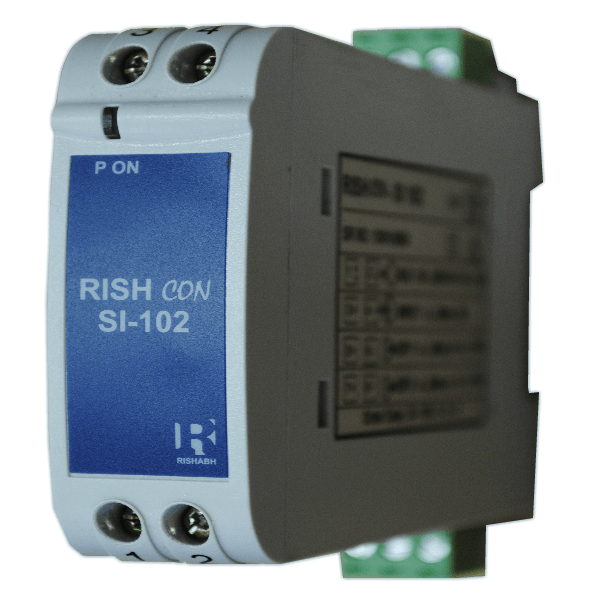
Isolating Amplifier Rish ducer TV808
Application
- 252 standard input and output combinations selected by soldered jumpers
- User-specific input and/or output ranges
- Isolating amplifier with one input one or two electrically insulated outputs.
- Power supply24… 60 VDC / AC or 85…230 VDC/AC
- Electric Isolation between input, output and power supply, prevents falsified measurement due to spurious potentials.
- Flexibility provided by more than 250 different input and output combinations selected by simply positioning soldered jumpers, helps in reduced stocking.
- Processes unipolar / bipolar and live zero signals provision for raising burden and signal conversion Green LED signals indicates device in operating condition.
- High Electrical Insulation between input and output – 2.3 kV, and power supply versus all other circuits – 3.7 kV
- Provision for either snapping the isolating amplifier onto top – hat rails or securing it with screw to a wall or panel.
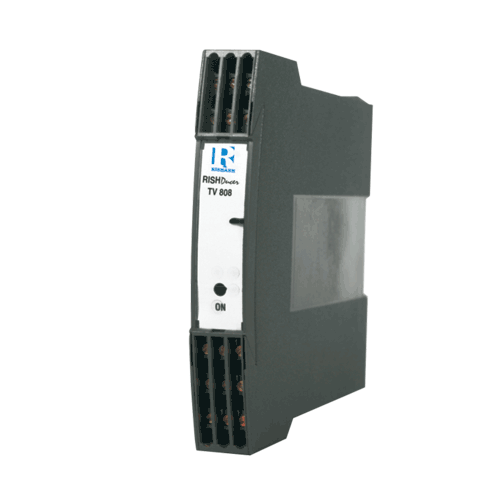
P17
Features
- Thin-walled casing – 6.2 mm.
- Standardized d.c. current output signal 4-20 mA.
- Supply from a current loop.
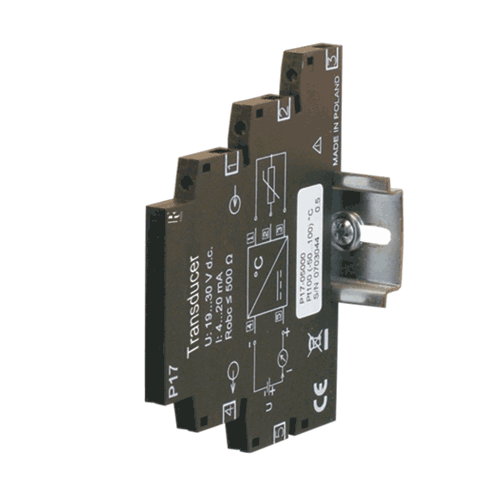
P17G
Features
- For the separation of measuring signals (eg in PLC).
- Thin casing – 6.2 mm.
- Standard d.c. current output signal 0/4 – 20 mA.
- Does not require an auxiliary supply voltage.
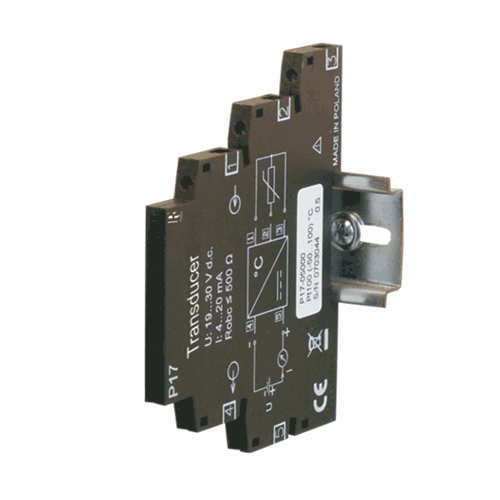
P20H
Features
- Continuous conversion of high current or high voltage signals.
- Standard d.c. current or d.c. voltage output signal.
- Small dimensions.
- 0.2 accuracy class.
-
Fully programmable parameters– measurement averaging time,– conversion characteristic,– preservation of the output signal at overflows,– RS-485 transmission parameters.
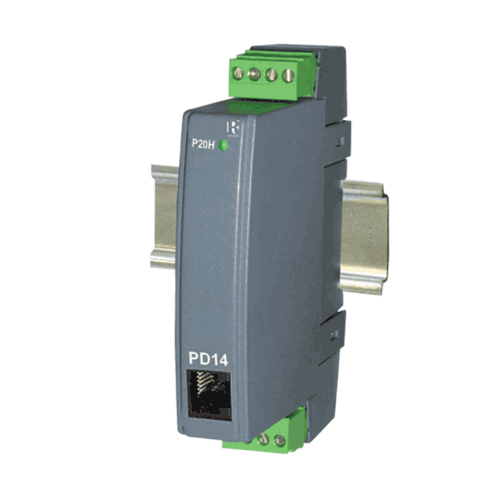
Rish CON SI 101 - Powerful DC Signal
Features
- I/P 20mA or 10V & O/P 20mA or 10Vdc
- Isolation between input and output & Power Supply:
- 2.3 kV between I/P & O/P,
- 3.7 kV between Power Supply & I/P or O/P
- Accuracy:-0.2%
- Output Burden:- 600Ohms @ 20mAdc
- Output Burden:- 2kOhms @ 10Vdc
- Onsite selectable DIN rail & wall mounting
- Universal Power Supply – 85…230Vac/dc
- LED indicating the power on state
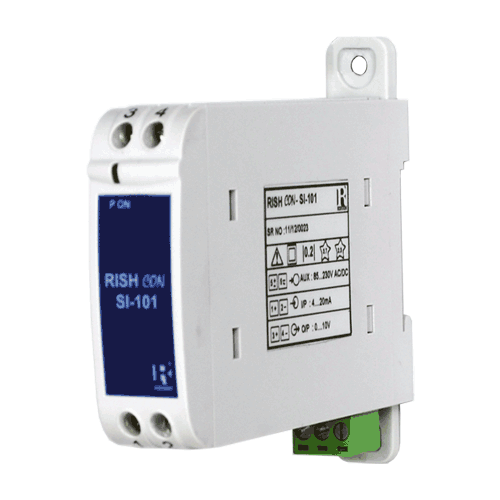
Programmable Tap position transducer Rish CON TPT
Features
- Input measuring range can be programmed using PC / Simplifies project planning and engineering (the final range can be determined during commissioning).
- Electrically isolated Dual out puts.
- Tap number is programmable from 1 to 100 using software.
- Tap position is displayed on front LED display.
- Analogue output signal also programmed using the PC (impressed current or superimposed voltage for all ranges between – 20 and + 20 mA DC resp. – 12 and + 15 V DC)
- Galvanic and optical isolation between Power supply, Input and outputs
- 3,4 wire measurement to compensate lead resistance automatically.
- 2 wire measurement with lead resistance compensation through software.
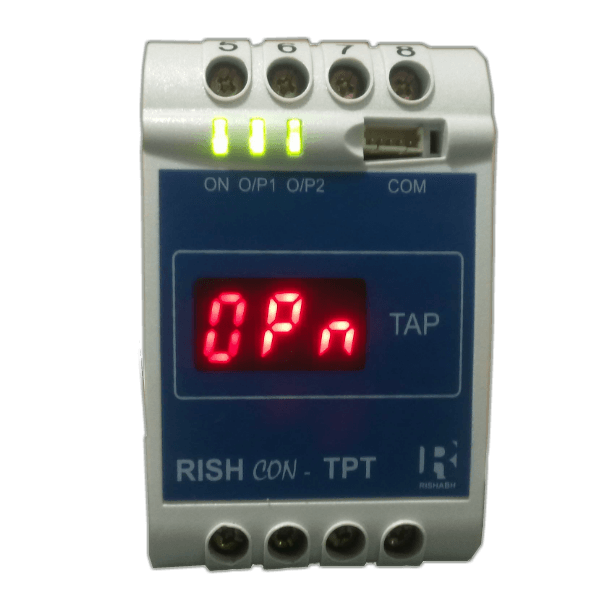
Configurable Transmitter Rish ducer PT602
Features
- Measuring ranges configurable with DIP switch and potentiometer
- Non – Standard user – specific ranges available
- Red LED’s indicator : an open or short – circuit.
- Electric isolation between input & output 2.3 kV and power supply & all other circuits 3.7 kV – Fulfils EN 61 010.
- Universal (DC / AC) power supply.
- Provision for either snapping the transmitter onto top-hat rails or securing it with screws to a wall or panel.
- Housing only 17.5 mm wide (size S17) / low space requirement.
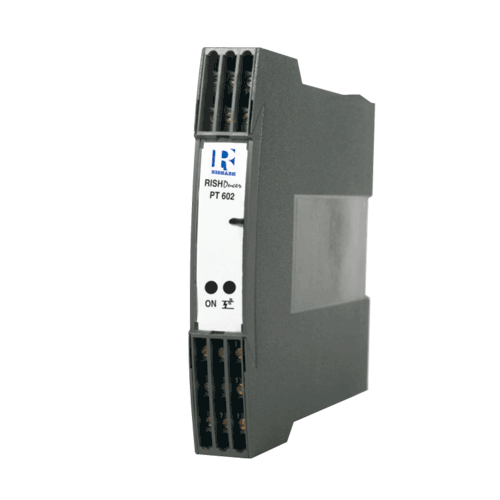
Programmable Universal Transmitter Rish ducer V604
Features
- Input variable (temperature, variation of resistance, DC signal) and measuring range programmed using PC / Simplifies project planning and engineering (the final measuring range can be determined during commissioning). Short delivery times and low stocking levels
- Analogue output signal also programmed on the PC (impressed current or superimposed voltage for all ranges between – 20 and + 20 mA DC resp. – 12 and + 15 V DC) / universally applicable. Short delivery times and low stocking levels
- Electric insulation between measured variable, analogue output signal and power supply / Safe isolation acc. to EN 61 010
- Wide power supply tolerance / Only two operating voltage ranges between 20 and a maximum of 264 V DC/AC
- Standard Version as per Germanischer Lloyd
- Provision for either snapping the transmitter onto top-hat rails or securing it with screws to a wall or panel
- Housing only 17.5 mm wide (size S17 housing)/ Low space requirement
- Other programmable parameters: specific measured variable data (e.g. two, three or four-wire connection for resistance thermometers, “internal” or “external” cold junction compensation of thermocouples etc,) transmission mode (special linearised characteristic or characteristic determined by a mathematical relationship, e.g. output signal = f (measured variable)), operating sense (output signal directly or inversely proportional to the measured variable) and open circuit sensor supervision (output signal assumes fixed preset value between – 10 and 110%, supplementary output contact signaling relay) / Highly flexible solutions for measurement problems
- All programming operations by IBM XT, AT or compatible PC running the self-explanatory, menu-controlled programming software, if necessary, during operation / No ancillary hand-held terminals needed
- Digital measured variable data available at the programming interface/ Simplifies commissioning, measured variable and signals can be viewed on PC in the field
- Standard software includes functional test program / No external simulator or signal injection necessary
- Self-monitoring function and continuously running test program /automatic signaling of defects and device failure
